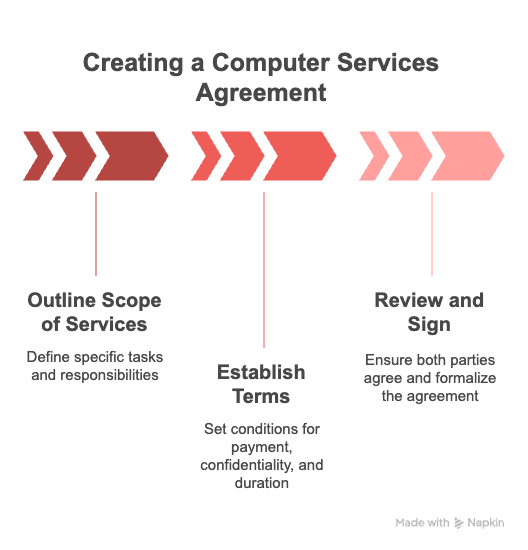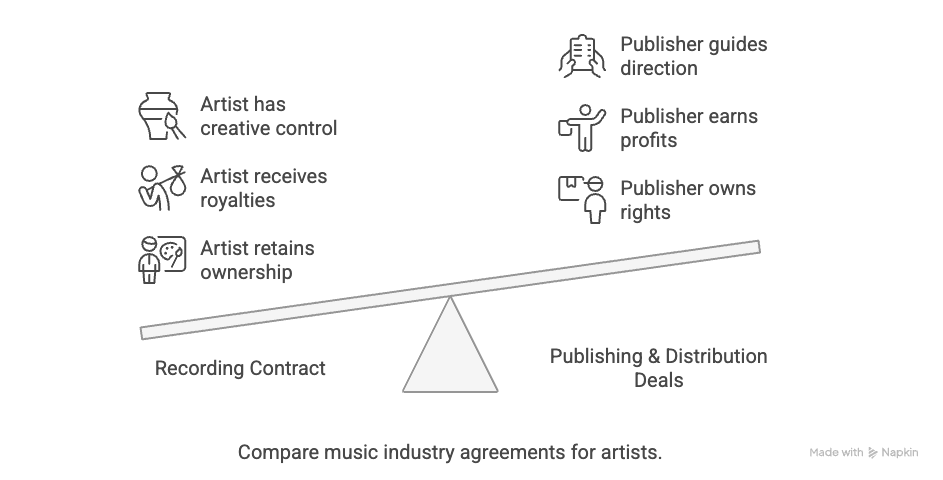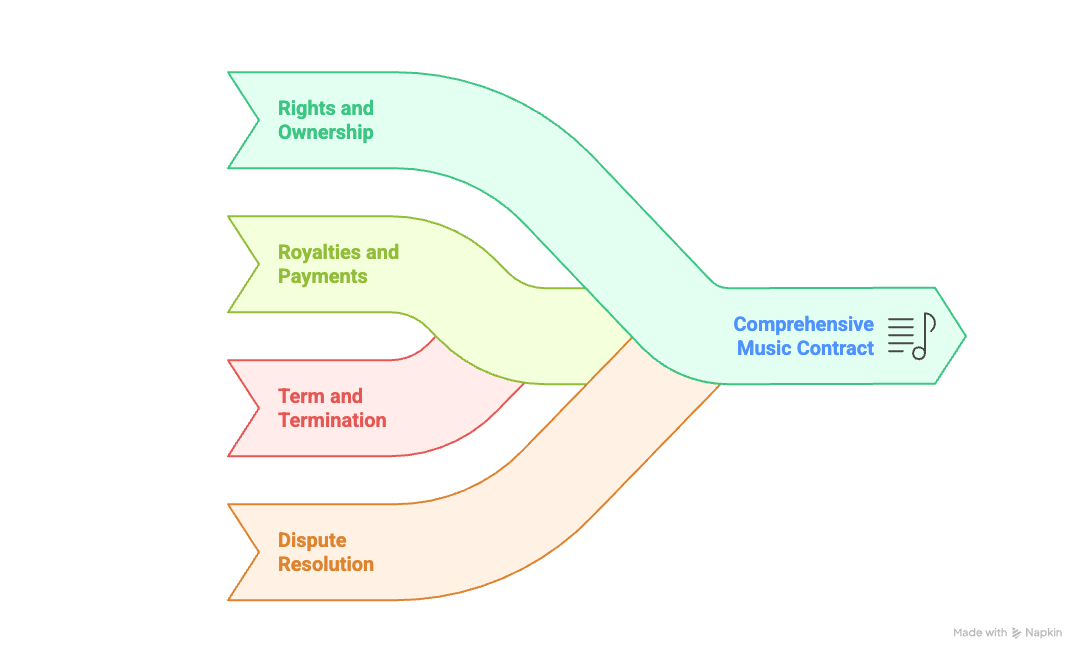
How To Create A Computer Services Agreement: Full Guide
Last Updated on May 10, 2025
A computer services agreement is essential when offering or receiving IT support, consulting, or development services. Without it, you risk miscommunication, scope creep, or legal exposure. In this guide, we’ll walk you through how to create a legally-sound computer services agreement that protects both parties and sets clear expectations. Whether you're a freelancer, managed service provider (MSP), or a business hiring IT services, this resource includes a downloadable template you can customize.
Why You Need a Computer Services Agreement
A computer services agreement defines the terms of engagement between a service provider and a client. It ensures that both parties understand:
- What services will be delivered
- How and when the provider will be paid
- How disputes or termination will be handled
- What data protection, confidentiality, and liability clauses apply
In industries where sensitive data, network access, or long-term support are involved, skipping a formal agreement can expose both parties to financial and legal risk.
Step 1: Identify the Parties
Start by listing the legal names, business structures (e.g., sole proprietorship, corporation), and addresses of both the service provider and the client. Clearly defining the parties prevents confusion later on, especially if disputes arise or you need to enforce the contract.
Step 2: Define the Scope of Services
Be specific. Describe exactly what services the provider will deliver. For example:
- Software development and customization
- Network setup, hardware support, or troubleshooting
- IT consulting and compliance guidance
- Maintenance and helpdesk services
Include a reference to an attached schedule (e.g., Schedule A) for a detailed breakdown. This allows for updates without rewriting the entire agreement.
Step 3: Outline Payment Terms
Define how the provider will be paid. Include:
- Fee structure (hourly, flat-rate, milestone-based)
- Invoicing frequency (weekly, monthly, per project)
- Payment terms (e.g., Net 15, Net 30)
- Late fees, interest rates, and acceptable payment methods
Transparency here prevents disputes and ensures financial clarity for both parties.
Step 4: Establish the Agreement Duration
Include:
- Start and end dates
- Conditions for early termination
- Renewal terms (automatic or manual)
- Project-specific milestones or phases
For ongoing services, indicate that the agreement will auto-renew unless notice is provided.
Step 5: Include Confidentiality and Data Protection Clauses
IT work often involves access to sensitive business data. A confidentiality clause ensures that:
- Both parties agree not to disclose private information
- Data is handled in compliance with laws like PIPEDA (Canada)
- The provider notifies the client immediately in the event of a breach
This section is essential for regulatory compliance and building trust.
Step 6: Clarify Intellectual Property Ownership
Define who owns the output of the services. Typically:
- The client owns all deliverables unless otherwise agreed
- The provider retains ownership of pre-existing tools or IP
- Any third-party components used must be properly licensed
Include licensing terms if reused components are included in the project.
Step 7: Limit Liability and Define Warranties
Protect both parties by including:
- A warranty that services will be performed professionally
- A disclaimer limiting indirect damages (e.g., data loss)
- A liability cap, such as limiting damages to the fees paid
This section limits legal exposure if something goes wrong during or after the service period.
Step 8: Add Termination Conditions
Outline how either party can exit the agreement:
- Termination for breach, with cure periods (e.g., 30 days)
- Termination for convenience, with written notice
- Post-termination obligations (e.g., data return)
Ensure both parties understand their rights and responsibilities when ending the agreement.
Step 9: Include Dispute Resolution and Jurisdiction
Clarify how conflicts will be handled:
- Negotiation and mediation as first steps
- Arbitration as an alternative to court
- Governing law and court jurisdiction (e.g., Ontario or British Columbia)
This prevents venue-shopping and helps resolve disputes more efficiently.
Step 10: Final Signatures and Document Handling
End with signature lines for both parties, including:
- Printed name and title
- Signature and date
Store signed copies securely and make them accessible to both parties. For digital agreements, use a platform that complies with electronic signature laws.
Download a Free Computer Services Agreement Template
Want to skip the formatting work? Download our professionally drafted, customizable Computer Services Agreement template in PDF format. It's free, legally sound, and ideal for freelancers, agencies, and businesses.
Download the Free Computer Services Agreement Template
Ready to apply what you've learned? Get instant access to the Computer Services Agreement PDF - free, editable, and built for Canadian businesses. No sign-up required.
Frequently Asked Questions
Answers to common questions about How To Create A Computer Services Agreement: Full Guide.
Do I need a lawyer to create a computer services agreement?
Not necessarily, but it’s wise to have one review the final version-especially for high-value projects or recurring contracts.
Can I reuse the same agreement for different clients?
Yes, but always tailor the scope of services, payment, and termination clauses to the specific client or project.
Is this agreement enforceable in Canada?
Yes, if properly executed. Be sure to follow Canadian contract law and include a clear jurisdiction clause.
How detailed should the scope of services be?
Very. Vague service descriptions often lead to disputes. Use attachments or schedules to define tasks clearly.
What happens if a client doesn’t pay on time?
Include late fee clauses and interest rates in the agreement. You may also add a right to suspend services until payment is received.
Should the agreement include a data breach protocol?
Yes. A strong agreement should outline what happens in the event of unauthorized access or a security incident involving client data.
Can I use this agreement for recurring monthly IT services?
Absolutely. Just ensure you define the monthly deliverables, SLAs, renewal conditions, and any specific limitations in scope.
Explore More in Creative Digital Contracts
Discover curated templates in Creative Digital Contracts to help your business stay compliant and efficient.


